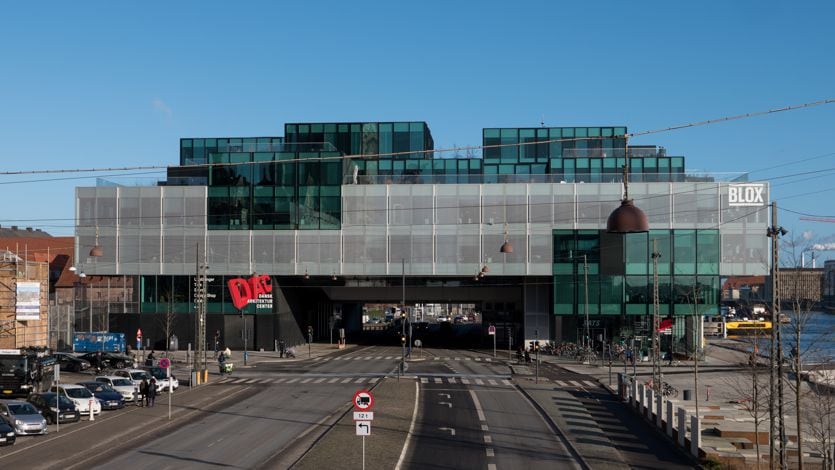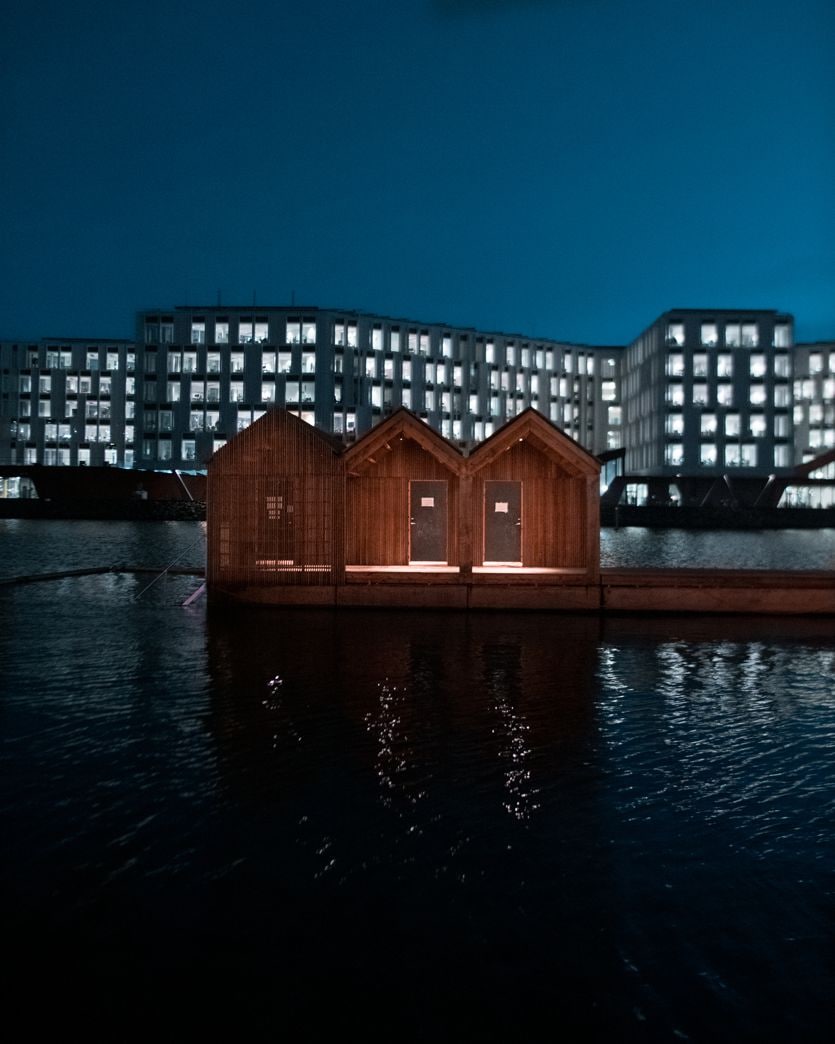Copenhagen, along the canals in search of creativity and sustainability

In Copenhagen the sea is never far away with its changing colours and with the sky and the water that merge. The city and those who live there have an indissoluble and osmotic relationship with water. The Vikings arrived in Copenhagen by sea and that port, in a strategic position on the Øresund Strait, became a base of choice. The maritime background is central to modern history and to the Danish architectural heritage with its port that has undergone a radical transformation: the internal areas have been converted into residential and commercial spaces according to an innovative urban model, based on a new humanism and a people-friendly infrastructure. An example of this is Nordhavn, Denmark's ideal city 4 km from the city centre, the largest real estate development project in Scandinavian history. Even today, it is along the canals that you can immerse yourself in the local lifestyle (the bicycle is the most used means of transport), you can enjoy the best views, you can breathe in the vibrant and creative atmosphere of what will be the UNESCO-UIA World Capital of Architecture for the whole of 2025 (it will then pass the baton to Barcelona), thanks to a constant commitment to sustainable architecture, urban livability and innovation. It is no coincidence that every month around 600 people move there and the average age is 37. Internationally renowned architectural firms are based there (from Bjarke Ingels Group to Henning Larsen Architects, Cobe, Gehl Architects, CF Møller and 3XN) and design also has a deep-rooted history with brands that have made Scandinavian and world history: Fritz Hansen, Carl Hansen & Søn, Louis Poulsen, Georg Jensen and Royal Copenhagen. Craftsmanship, the use of high-quality materials, creativity and iconic design are also the common thread of brands that were born more recently in Copenhagen and from here have set out to conquer the world.

Blox, multifunctional center on the Frederiksholms Kanal.
Right along the canals there are historic and innovative architectural works, in a game of ancient and modern that is found throughout the city. If at 12 Frederiksholms Kanal there is the National Museum (editor's note: don't miss "The Viking Witch" exhibition that explores the mystical world of the Vikings and their relationship with their time and precisely the sea) housed in the ancient Prince's Mansion, a beautiful eighteenth-century building in rococo style, at number 30 between the Royal Library and Langebro, practically at the end of the canal where until a few years ago there was an abandoned port area, today there is the heart of the cultural district of Copenhagen, with BLOX, emblem of Danish creativity and leader of the urban development projects aimed at giving a new identity to the city with new bridges, public squares, areas for pedestrians and cyclists. Designed by internationally renowned architects OMA and funded by the philanthropic association Realdania, BLOX is home to DAC – (Danish Architecture Center), a reference for architecture and design enthusiasts from all over the world, Creative Denmark where knowledge and experiences meet to create engagement, and inspire people to take a stand on architecture and design, and BLOXHUB, a multidisciplinary incubator for sustainable development that seeks to combine the challenges of urbanization and climate change with a new collaborative approach between bodies, institutions and citizens.

View from above of the Kartoffelrækkerne district.
Our itinerary on the water returns along the Nyhavn canal, the most famous and photographed in the city with its characteristic colored buildings, the moored vintage boats, the cafes and restaurants. Following it you arrive at the Copenhagen Opera House (Operaen) inaugurated in January, one of the most modern theaters in the world and also one of the most expensive (over 500 million dollars) designed by the Danish architect Henning Larsen. Shortly after you pass in front of the Black Diamond, an extension of the Royal Library with its shiny mirrored windows that make it look like a diamond and reflect the magnificent landscape around it. Inaugurated in 1999, you can also go there just to sip a coffee while not far away there are the docks from which the kids dive into the water and bathe in the (clean) canal. In the Kulturkvarter (cultural district) itself, you cannot miss the beautiful Tivoli Park (the famous amusement park with its rides, gardens, restaurants and concerts) and Christiansborg Palace, the official palace of the Danish crown, where you can visit the audience and party rooms, admire the tapestries created by the artist Bjørn Nørgaard that tell more than a thousand years of Danish history and the collection of copper utensils from the kitchens that have remained as they were in 1937. Not far away in the Østerbro district is the characteristic district of Kartoffelrækkerne (potato row), a small area with beautiful and very expensive London-style terraced houses, which became famous after Lily Collins, the star of the hit Netflix series “Emily in Paris”, bought a house there. Don't miss the small galleries in the neighborhood, including Dybdahl Co, a journey to discover the visual aspects of rare books found in auctions, archives, libraries and museums that become posters, visual treasures of the past never drawn, engraved and printed. A little further on is Olufsvej, a delightful little street between the city's largest park, Fælledparken, and the neighborhood's main shopping street, Østerbrogade.

Nordhavn. The most innovative project on the Scandinavian peninsula, 4 km from the city centre, with buildings designed to the highest energy standards, using recycled and recovered materials
One of the most popular places for young people is Kødbyen, the meatpacking district. Here you will find a mix of bars and restaurants, such as Fiskebar, where you can enjoy only local fish between floor-to-ceiling windows and rough concrete walls. There are also small independent shops and design studios. We are in Vesterbro, a very popular destination even if it is outside the center. The same goes for Nørrebro, once a working-class neighborhood with characteristic cobbled streets north of the center of Copenhagen and the lakes, Søerne. From here, in a few minutes on foot, crossing the Sortedams So canal on the Dronning Louises Bro bridge, where there is only a coming and going of bicycles, you find yourself at the tables of Aamaan's, the restaurant of chef Adam Aamann: everything is fresh and homemade, even the smoked meats. You absolutely must try his delicious smørrebrød, a sort of stuffed sandwich, prepared with organic ingredients. Hospitality can count on some noteworthy design hotels such as 25hours Hotel Indre By which is located in a 19th century building, a former porcelain factory and then a university. Centrally located, near the Round Tower, it offers 243 unique rooms and hidden gems such as the Vinyl Room. In the city center there is the luxurious Villa Copenhagen as well as the Nobis Hotel Copenhagen housed in a neoclassical building from 1903, initially designed by Danish architect Martin Borch. As one of the first reinforced concrete buildings in Copenhagen, it housed the Royal Danish Academy of Music, before being transformed into a hotel under the guidance of Swedish architectural firm Wingärdhs. 360-degree luxury at the centrally located d'Angleterre, member of Leading Hotels of the world, a true icon of Copenhagen since 1755, is the only 5-star superior luxury hotel in Denmark, centrally located on Kongens Nytorv, a short walk from the Royal Danish Theatre, Nyhavn canal and the pedestrian shopping street Strøget, also home to the Michelin-starred Marchal restaurant, Balthazar Champagne Bar, the patisserie and the renowned Amazing Space Spa.
Not to be missed outside the city is the Louisiana Museum of Contemporary Art (35 minutes by train from the central station København H towards Helsingør) in Humlebæk. The location is magnificent and inside the rooms and exhibition areas are connected by a characteristic glass corridor: here all the buildings and the surrounding park are a work of art as beautiful as the exhibitions.
ilsole24ore




